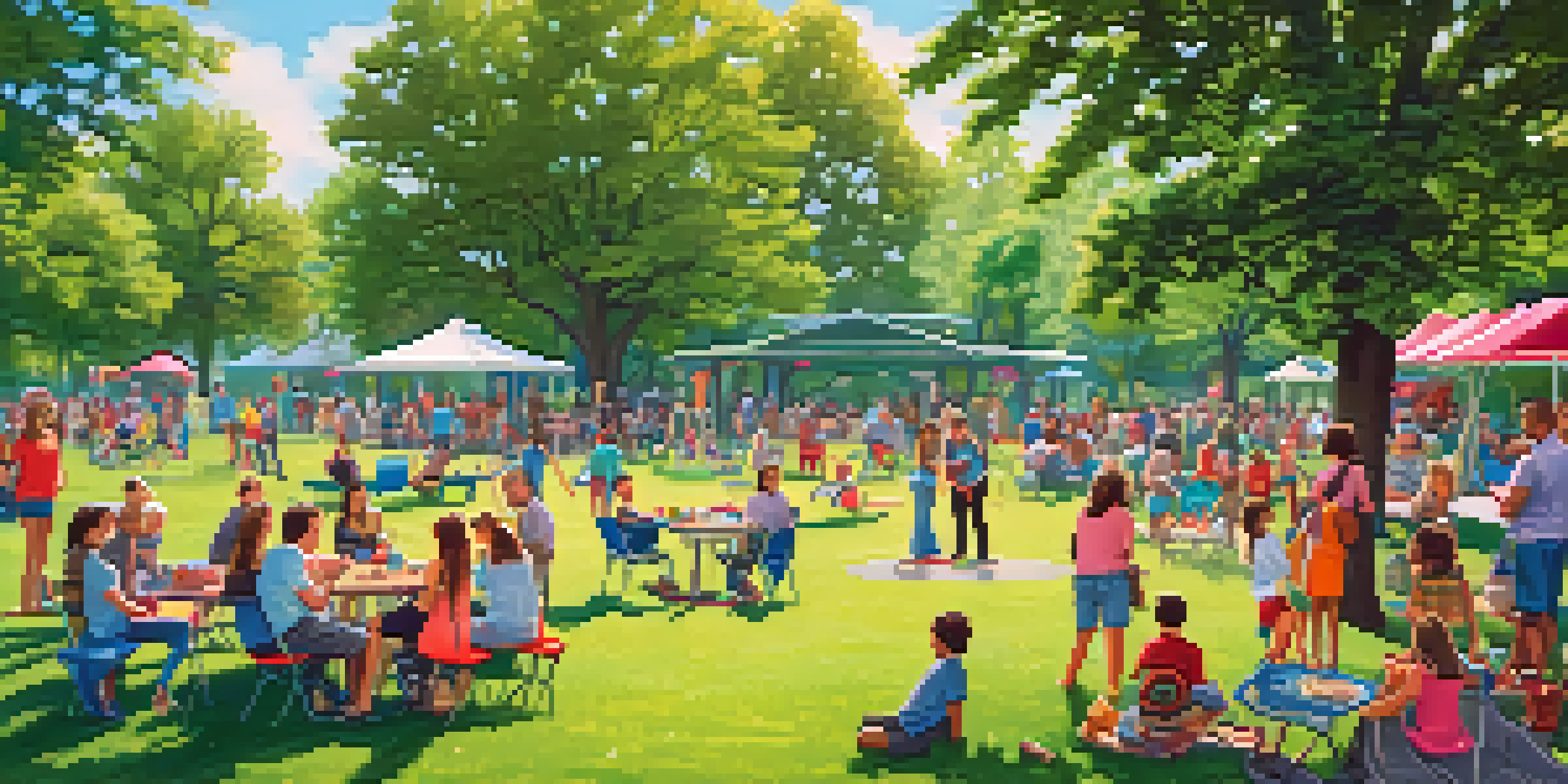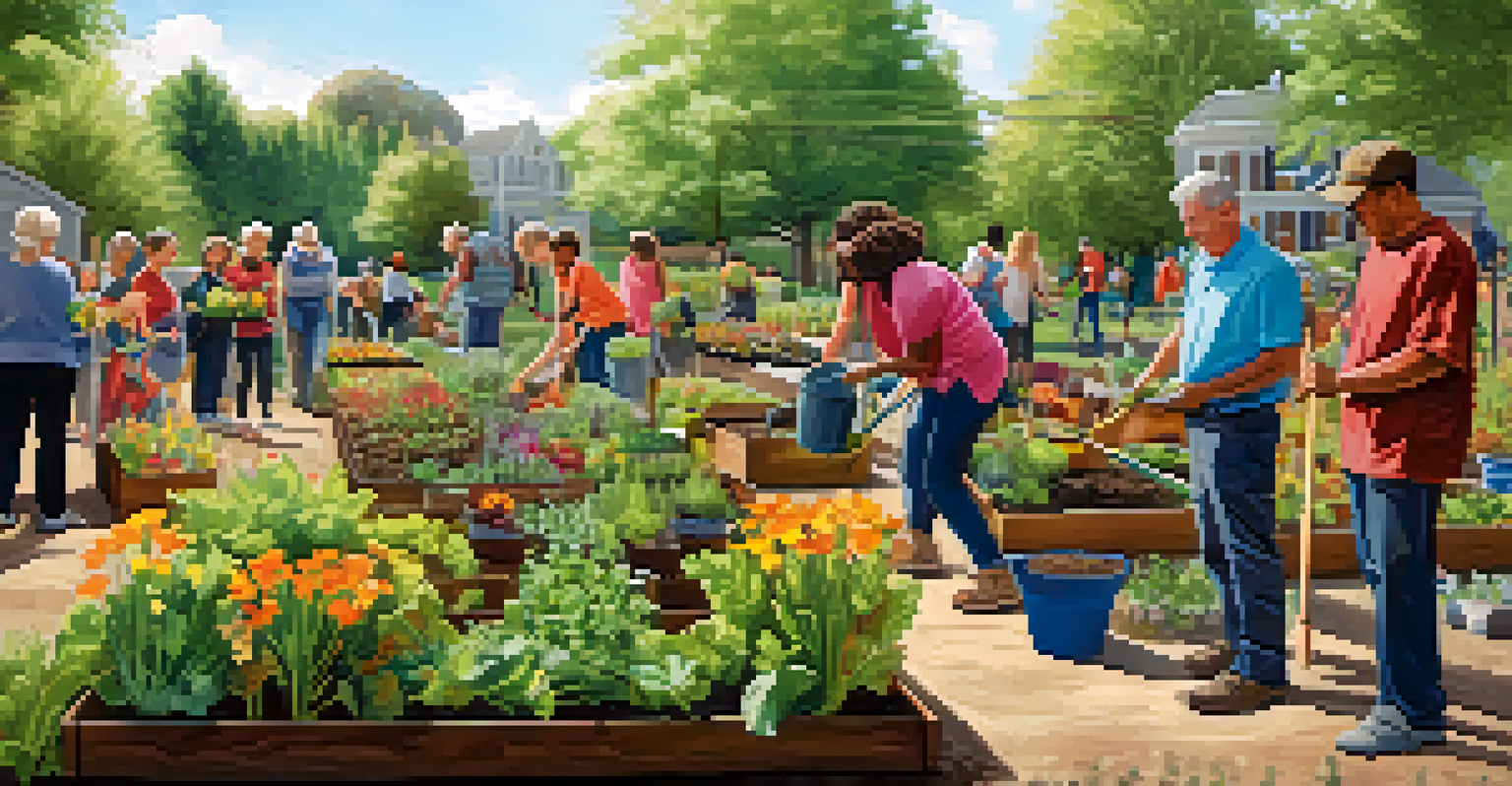Understanding the Challenges Faced by HOAs Today

The Evolving Role of HOAs in Modern Communities
Homeowners Associations (HOAs) have become pivotal in managing community living, but their roles have evolved significantly over the years. Once primarily focused on maintenance and aesthetics, today’s HOAs are expected to address a broader range of issues, including governance, community engagement, and even environmental concerns. This shift necessitates a more active involvement from board members and residents alike, leading to new challenges as expectations rise.
Community is much more than belonging to something; it's about doing something together that makes belonging matter.
In addition, the increasing complexity of community needs, driven by demographic changes and lifestyle trends, means that HOAs must adapt quickly. For instance, with more families working from home, there’s a greater demand for shared spaces that promote remote work and social interaction. Balancing these evolving needs while maintaining community standards poses a unique challenge for many associations.
Ultimately, the role of HOAs is more crucial than ever, but it requires a clear understanding of community dynamics and a willingness to adapt. This evolution not only impacts how HOAs operate but also shapes the relationships between board members and residents, underscoring the need for effective communication and collaboration.
Financial Management: A Growing Concern for HOAs
Financial stability is a cornerstone of any successful HOA, but managing finances can be a daunting task. Many associations struggle with budgeting, dues collection, and unexpected expenditures, which can quickly lead to financial strain. Additionally, the need for transparency in financial dealings has never been greater, as residents demand to see how their fees are being utilized.

Moreover, the impact of economic fluctuations, such as rising inflation or housing market changes, can complicate financial planning. HOAs often find themselves needing to adjust assessments or initiate special assessments to cover unforeseen costs, leading to potential resident dissatisfaction. This financial juggling act requires proactive management and strategic planning to ensure long-term sustainability.
HOAs' Evolving Roles and Challenges
Homeowners Associations are now expected to address a wider range of community issues, requiring active involvement and adaptability from both board members and residents.
As a result, many HOAs are turning to technology for assistance, utilizing software solutions that streamline budgeting and accounting processes. This modern approach not only enhances transparency but also empowers board members to make informed financial decisions. By prioritizing sound financial management, HOAs can navigate these challenges effectively and maintain the trust of their communities.
Conflict Resolution: Navigating Disputes Among Residents
Disputes among residents are a common challenge for HOAs, often stemming from differing opinions on community rules or shared resources. Whether it’s a disagreement over property modifications or noise complaints, unresolved conflicts can escalate quickly, creating tension within the community. HOAs must be equipped to handle these disputes thoughtfully and fairly, ensuring that all voices are heard.
The greatest danger in times of turbulence is not the turbulence; it is to act with yesterday's logic.
Establishing clear communication channels is crucial for effective conflict resolution. Regular meetings, newsletters, and online forums can help facilitate open dialogue, allowing residents to express concerns before they escalate. Additionally, encouraging a sense of community can foster relationships that lead to more amicable resolutions when conflicts arise.
Furthermore, implementing a structured dispute resolution process can also be beneficial. By providing guidelines for mediation or arbitration, HOAs can help residents navigate their disagreements in a constructive manner. This proactive approach not only resolves issues but also strengthens community bonds, promoting a more harmonious living environment.
Engaging Residents: The Key to Strong Community Bonds
Active resident engagement is essential for fostering a sense of community within HOAs, yet many associations struggle to involve their members. Residents may feel disconnected from decision-making processes or unaware of upcoming events, leading to low participation rates. To combat this, HOAs must prioritize creating opportunities for residents to engage and contribute.
One effective strategy is to host regular events and activities that cater to a variety of interests, encouraging residents to connect with one another. Whether it’s a community BBQ, gardening club, or fitness classes, these gatherings can break down barriers and build relationships among neighbors. Moreover, incorporating technology, such as community apps or social media, can help keep residents informed and engaged in real-time.
Financial Management is Crucial
Financial stability and transparency are vital for HOAs as they navigate budgeting challenges and economic fluctuations to maintain resident trust.
Ultimately, an engaged community is a thriving one. When residents feel involved and valued, they are more likely to take pride in their neighborhood and contribute positively. By investing in resident engagement initiatives, HOAs can create a vibrant, connected community that benefits everyone.
Adapting to Technological Advancements in Community Management
Technology is reshaping the way HOAs operate, offering new tools for management and communication. From online payment systems to management software, these advancements can streamline operations and improve efficiency. However, the rapid pace of technological change can also be overwhelming for some boards, leading to challenges in implementation and adoption.
For instance, while many residents appreciate the convenience of online services, some may be less comfortable with technology, creating a digital divide within the community. HOAs must balance the benefits of modernization with the needs of all residents, ensuring that no one is left behind. This may involve offering training sessions or alternative methods for participation.
Moreover, embracing technology can enhance transparency and communication within the community. Online portals can provide easy access to meeting minutes, financial reports, and community updates, fostering trust between the board and residents. By adapting to these technological advancements thoughtfully, HOAs can enhance their operations and create a more inclusive community.
Balancing Governance and Community Needs
HOAs are tasked with governing communities while ensuring the needs and desires of residents are met, which can often be a delicate balancing act. The board must enforce rules and regulations to maintain property values and community standards, but they must also remain responsive to the concerns and preferences of residents. Striking this balance requires clear communication and a willingness to adapt when necessary.
For example, while some residents may advocate for stricter regulations on property modifications, others may desire more freedom in personalizing their homes. HOAs need to create a governance structure that allows for community input and fosters a sense of shared ownership. Encouraging resident participation in rule-making processes can lead to more equitable solutions that reflect the community’s values.
Engaging Residents Builds Community
Active resident engagement through events and communication fosters a connected community, enhancing overall satisfaction and participation.
Ultimately, effective governance is about collaboration and compromise. By prioritizing open dialogue and transparency, HOAs can create a structure that not only enforces necessary rules but also respects the voices of residents. This approach enhances community trust and fosters a thriving neighborhood environment.
Environmental Sustainability: A Growing Responsibility for HOAs
As environmental concerns continue to rise, HOAs are increasingly confronted with the responsibility of promoting sustainability within their communities. From energy-efficient practices to waste reduction initiatives, residents are looking to their associations for leadership in creating environmentally friendly spaces. However, integrating sustainable practices can pose challenges, especially when balancing costs and community preferences.
For instance, implementing green initiatives such as community gardens or recycling programs may require upfront investments that some residents might resist. HOAs must find ways to educate and engage their communities about the long-term benefits of sustainability, helping residents see the value in these initiatives. This often means involving residents in the decision-making process to ensure their needs and opinions are considered.

Additionally, collaborating with local governments or organizations can provide HOAs with resources and guidance to implement effective sustainability programs. By prioritizing environmental responsibility, HOAs not only contribute to the well-being of the planet but also enhance the quality of life for their residents. This commitment to sustainability can foster community pride and create a lasting impact.
The Future of HOAs: Navigating Uncertainties Ahead
The landscape for HOAs is continuously changing, presenting both challenges and opportunities as they navigate future uncertainties. With shifting demographics, evolving community expectations, and technological advancements, HOAs must be adaptable and forward-thinking to thrive. This requires a proactive approach to planning and a willingness to embrace change.
For instance, as more millennials and Gen Zers enter the housing market, their preferences for community living may differ significantly from previous generations. HOAs will need to understand these preferences and adapt accordingly, whether it’s through enhanced digital engagement or the incorporation of shared amenities. Staying attuned to these trends will be key to attracting and retaining residents.
Ultimately, the future of HOAs is promising, but it hinges on their ability to adapt and innovate. By fostering a culture of collaboration, transparency, and responsiveness, HOAs can navigate the uncertainties ahead and continue to build strong, vibrant communities. The journey may be complex, but with the right approach, HOAs can emerge stronger than ever.